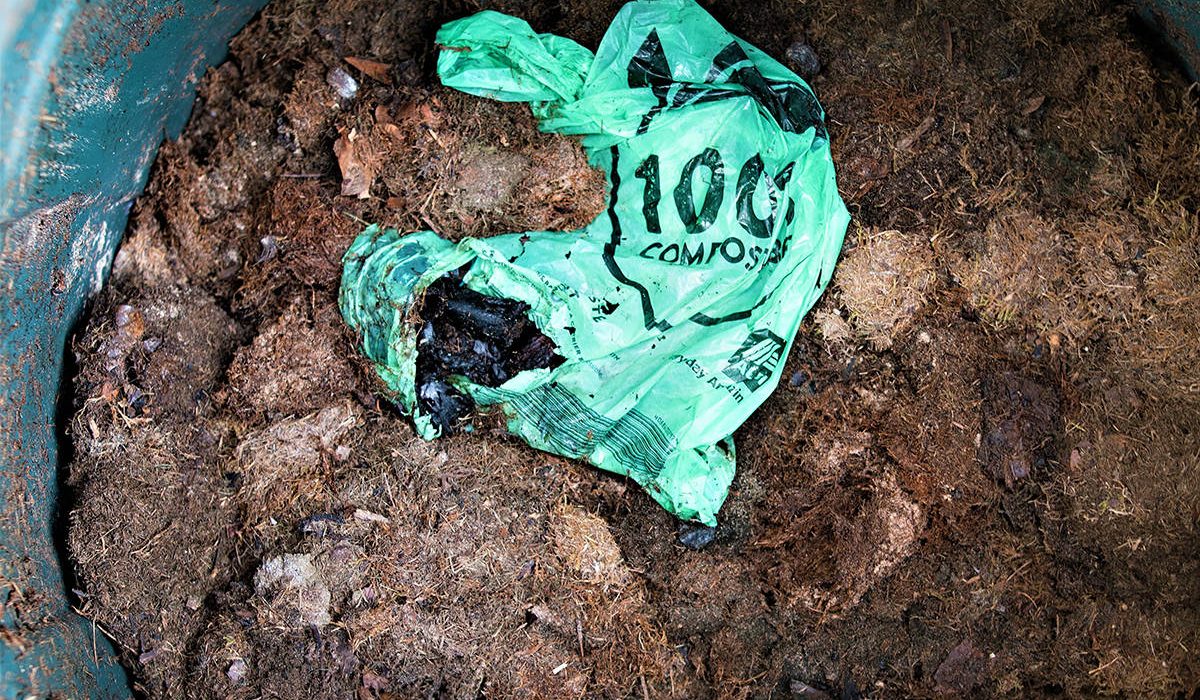Composting stands as a beacon of hope in the realm of waste management, offering a transformative process where refuse metamorphoses into valuable soil enrichment. Amidst the escalating global crisis of plastic pollution, the pursuit of compostable plastics has gained traction as a potential remedy. Yet, the optimism surrounding these materials faces a sobering reality unveiled by the UK’s Big Compost Experiment. Despite widespread consumer embrace, this pioneering study has laid bare a disconcerting truth: a significant proportion of items labeled as “home compostable” exhibit limited degradation within typical backyard compost bins. This revelation not only raises doubts about the efficacy of current compostable plastics but also underscores the pressing need for clarity and education among consumers. As enthusiasm clashes with the stark findings of scientific inquiry, the discourse surrounding compostable plastics enters a critical juncture, urging stakeholders to reassess strategies and foster a more informed approach towards sustainable waste management.
The Big Compost Experiment: Unveiling Reality
The groundbreaking Big Compost Experiment, conducted from November 2019 to November 2021, enlisted the participation of nearly 10,000 individuals across the United Kingdom. This innovative initiative encompassed two phases: an initial survey segment and a subsequent real-life composting experiment, which engaged 1,648 volunteers. Participants actively contributed to the experiment by selecting items labeled as “home compostable” and observing their degradation within household compost bins. The outcome of this endeavor proved to be revelatory, as it defied conventional wisdom by revealing that only a fraction of the designated compostable items exhibited substantial decomposition. This outcome not only highlights the limitations of current compostable plastics but also exposes the pervasive confusion surrounding these materials among consumers. In essence, the Big Compost Experiment serves as a clarion call, prompting a critical reassessment of prevailing beliefs and practices concerning compostable plastics in waste management.
Biodegradable vs Compostable: Navigating Terminology
In the discourse surrounding sustainable materials, it’s paramount to discern between “biodegradable” and “compostable,” a task that is frequently muddled. Biodegradability refers to a material’s ability to undergo biological breakdown over time, irrespective of the environment. In contrast, compostability pertains to the specific ability of a substance to decompose within composting facilities, subject to defined conditions. The distinction between these terms is pivotal, yet often overlooked, leading to widespread confusion among consumers.
The findings of the Big Compost Experiment underscore the imperative for clearer labeling and standardized definitions to alleviate this confusion. By providing transparent information about the biodegradability and compostability of products, consumers can make more informed choices and contribute to sustainable waste management practices. Thus, enhancing clarity in terminology and labeling is essential to empower consumers and foster a more environmentally conscious society.
Disappointing Results: The Reality of Home Composting
Despite hopeful anticipation, the outcomes of home composting for most compostable plastics have fallen short of expectations. The prevailing optimism surrounding these materials, buoyed by manufacturer claims and consumer enthusiasm, has been challenged by the stark reality revealed in real-life composting scenarios. Disappointingly, items labeled as “home compostable,” including common items like coffee cups, tea bags, and cling film, have demonstrated persistent resistance to degradation within household compost bins.
This disparity between promise and reality serves as a poignant reminder of the complexities inherent in waste management. Despite varying composting durations, the outcomes remained consistent, highlighting the overriding influence of compost bin dynamics on degradation processes. As such, the challenges encountered in home composting underscore the need for a more nuanced understanding of compostable plastics and the development of effective strategies to bridge the gap between expectations and outcomes.
Challenges and Future Directions: Navigating the Complexity
Navigating the complexities inherent in compostable plastics demands a comprehensive approach that addresses multifaceted challenges and paves the way for future innovation. Regulatory interventions play a pivotal role in this endeavor, as standardized labeling can provide consumers with clear guidance and foster informed decision-making. Moreover, enhancing consumer education is essential to promote awareness and understanding of compostable plastics, thereby empowering individuals to make sustainable choices.
Concurrently, advancements in materials science are crucial for developing compostable polymers that effectively decompose across diverse composting conditions. Researchers advocate for the creation of materials capable of sensing environmental cues, enabling them to transition seamlessly from stability to biodegradability. Such innovations hold the potential to revolutionize waste management practices, offering sustainable solutions to the pervasive issue of plastic pollution.
By embracing a multifaceted approach that combines regulatory measures, consumer education, and scientific innovation, we can overcome the challenges posed by compostable plastics and pave the way for a more sustainable future. It is through collaborative efforts and strategic initiatives that we can navigate the complexity of compostable plastics and chart a course towards effective waste management practices.
Moving Forward: Towards Sustainable Solutions
While the Big Compost Experiment underscores the limitations of home composting for compostable plastics, it also points towards potential solutions. Leveraging separate routes for industrial composting, coupled with improved labeling and scientific innovation, offers a path forward. However, achieving meaningful progress necessitates collaborative efforts among policymakers, manufacturers, scientists, and consumers to address the complexities of plastic waste management comprehensively.
In conclusion, the journey towards sustainable waste management demands a holistic approach, encompassing regulatory measures, technological innovations, and public engagement. While the road ahead may be challenging, the insights gleaned from the Big Compost Experiment serve as a catalyst for informed action and a renewed commitment to forging a more sustainable future.

